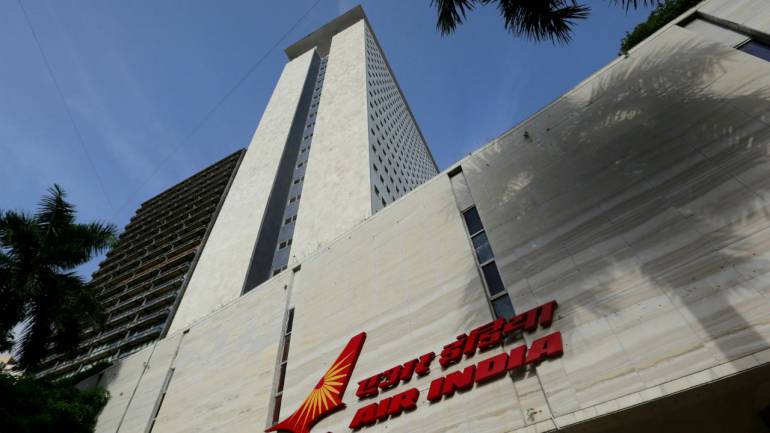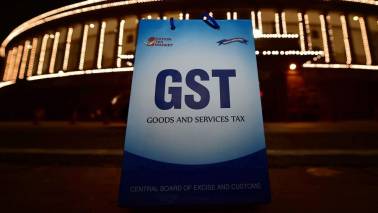The path to recovery is on paper as of now but how long will it take and what are the hidden costs of the measures, are questions yet to be answered of the moment.
A silver lining in the dark cloud has finally appeared for Air India with the government approving a Rs 29,000 crore plan to halve airline’s debt.
In this Moneycontrol podcast, we will try and explore the bailout package in detail but first the back story.
Once upon a time ...
That the Maharaja has fallen to hard times is old news. What is unfortunate though is that the airline in dire distress just happens to be our flag carrier, the largest international carrier out of India, the third largest domestic airline in India in terms of passengers carried, and the dream come true of founding father J. R. D. Tata who conceived it as Tata Airlines in 1932.
As is common knowledge, after World War II, it became a public limited company and was renamed as Air India. Another moment of pride came when on 21 February 1960, it took delivery of its first Boeing 707 named Gauri Shankar and became the first Asian airline to induct a jet aircraft in its fleet.
The downward spiral was long time coming because since 2000–01, futile attempts have been made to privatise the carrier and from 2006 onwards, following its merger with Indian Airlines, the losses have been staggering. The reasons for that are many.
In 2012, Geetanjali Shukla wrote in Business Today and we quote, "No public enterprise in recent memory epitomises the adage "The government should not be in the business of running a business" as much as Air India.
From being a market leader on domestic routes in 2001 - the operation was called Indian Airlines then, before it merged into Air India - to becoming an also-ran today, the airline makes for a case study on how not to merge two entities." Unquote.
Geetanjali listed the factors that have dragged the airline down and called out the absence of resourceful and stable leadership, a bloated headcount of 30,517 employees, lack of standardised hiring policies for the rank and file, lack of diligence on HR issues, years of losses with no turnaround visible and more.
The sad fact being that the Maharaja did so well in the 1960s and 1970s that even the fledgling Singapore Airlines dropped by to take some pointers.
But cut to the present. As has been reported widely in the past, post the government approval of the sale of a 76 percent stake in Air India, the sale has been in a state of deep freeze due to lack of buyer interest despite some amount of inquisitiveness displayed by private airlines such as IndiGo and Jet Airways.
The reason for this state of affairs is obvious. It is the classic case of a dead albatross around the neck or to put it in less poetic terms, a massive debt liability of around Rs 48,781 crore as of March 2017. What made things worse was a substantial rise in aviation turbine fuel prices (ATF) and the weakening rupee, as also the inability to raise fares in an intensely competitive sector.
Turbulent times…
Air India though is not alone in its misery. In March this year, Business Today, along with many news portals, cited PTI to report that The Public Enterprises Survey after having analysed the performance of central public sector units, showed that BSNL, Air India and MTNL had incurred 55.66 percent of the total losses suffered by the top ten loss-making CPSEs in 2016-17. We quote, "The top ten loss-making state-owned firms accounted for a whopping 83.82 percent of the total losses made by 82 loss-making central public sector enterprises (CPSEs) during the year." Unquote.
The point simply being that in the time to come, you could see distress signals from more entities in the public sector but let us revert to the Air India story.
In May 2018, Prashanth Perumal, wrote in The Hindu, how Air India's debt burden was caused by accumulated losses over a decade compounded by the cost of paying interest on its massive debt. So this was a vicious circle unlike any other.
Prashanth explained further why in such a scenario, a sale seemed far-fetched and we quote, "Some analysts believe that Air India may not be worth anything to its buyers as they are unlikely to obtain any free cash flow after paying money to lenders. In fact, they may have to pay money from their own pockets if they assume personal liability for the debt." Unquote.
A solution in sight?
Finally though, a safe landing seems like a probability. Multiple news sources reported on November 30, 2018 that the Central government has decided to transfer Air India's debt worth Rs 29,000 crore to a special purpose vehicle (SPV) -- Air India Assets Holding. According to a senior official, the decision to transfer the Rs 29,000-crore debt to the SPV was taken by an inter-ministerial panel -- Air India Specific Alternate Mechanism -- which has been formed to look after the divestment of the national carrier. The move could of course lessen the interest payment obligation of the airline on its total outstanding debt.
NDTV Profit citing Indo-Asian-News Service (IANS) stated that a senior official had shared two possible ways under consideration of transferring the debt. The first involved the banks' nod to shift the owed amount to the SPV, while the other mandated the SPV to pay off the Rs 29,000 crore debt by raising funds.
Additionally, the inter-ministerial panel has decided to divest the government's stake in Air India Air Transport Services (AIATSL).
The amount raised from the divestment of AIATSL will obviously be used to retire some of the accumulated debts of Air India.
Earlier, Civil Aviation Secretary R.N. Choubey had also said that the national carrier has also commenced a "cost-cutting and revenue augmentation" plan to garner "financial benefits" of Rs 2,000 crore per annum. Which could translate into some positive initiative on the part of the inertia-ridden national carrier.
Also, any future financial support to the airline will be contingent on the results that it achieves by implementing the augmentation plan. Plus, defaulting on payment obligations is out of the question.
Desperate measures
Many other brand saving strategies are being considered. On November 20, Rhik Kundu had reported in Mint that Air India was expecting to raise as much as $850 million (about Rs 6,100 crore) by selling and leasing back seven wide-body aircraft. The list included six Boeing 787 (Dreamliner) and one Boeing 777 aircraft, which were delivered to the airline between November 2016 and March 2018, according to a tender posted on November 16 on the airline’s website. A sale and leaseback (SLB) process allows the owner of an aircraft to sell the asset and then take it back on lease from the leasing company. Such deals remove the aircraft, and its associated debt, from the balance sheet of an airline.
“Under the SLB, AI (Air India) would sell the above aircraft to the lessor and immediately lease the same back under an operating lease for a period of up to 12 months with an option to extend by three more years at a mutually negotiated price,” the carrier said in its tender document.
The national carrier is likely to use the funds from the sale and leaseback process to pay a portion of its aircraft debt.
In August, Mint had also reported that Air India had also raised Rs 1,500 crore from Bank of Baroda (BoB) under a sovereign guarantee to service bank loans and dues of international vendors, including leasing companies.
And of course, the real estate goody bag of Air India will also come handy for the purpose of raising some much needed liquid assets.
On November 28, Business Today reported that a ministerial panel headed by Finance Minister Arun Jaitley had green-lighted the sale of 27 acres of Air India's land in the capital's upmarket Vasant Vihar to public sector company NBCC. NBCC (India) Limited, as you probably know is a blue-chip Government of India Navratna enterprise and a Central Public Sector undertaking which trades publicly in the market. It engages in real estate development and construction business and also provides project management consultancy.
The Times of India also learnt that the prized 27 acres of Air India's land in the capital's upmarket Vasant Vihar to NBCC, will be used to build high-end luxury apartments. The panel reportedly also took an in-principle decision to take up the sale of a large plot on Baba Kharak Singh Marg, in Central Delhi, which can be taken up for commercial use.
TOI added that in the next phase of monetising the beleaguered airline's assets, the Centre will decide on several buildings that it owns. And as Business Today said and we quote, "The logic is clearly to get rid of all the real estate that the airline does not need. As per government estimates, the sale of AIATSL and some of the other subsidiaries, along with the monetisation of Air India's land assets, could help the debt-ridden carrier raise over Rs 10,000 crore, which will be used to repay lenders." Unquote.
And if the oil prices continue to remain stable and if its debt is reduced substantially, a successful disinvestment round could just be a possibility in the near future.
According to Civil Aviation Secretary R.N. Choubey, the aviation ministry has also requested the revenue department to put aviation turbine fuel under goods and services tax (GST) and also to address certain tax credit related issues faced by the aviation sector. Mint quoted the secretary who opined that If airlines are not in a position to service their debt, the debt burden will go up.
A few questions remain
Many observers have however wondered at the sagacity of selling Air India’s ground handling firm which just happens to be the national carrier’s only profitable subsidiary. According to news sources, in 2016-’17, it earned a profit of Rs 33.4 crore, and over Rs 620 crore in revenues from its handling operations.
It is important to note also that in 2012, the incumbent government had promised to infuse Rs 50,000 crore in the airline till 2032. And the company has received Rs 27,195 crore till date.
In July, as Scroll reported, the Centre had sought Parliament’s approval to sanction an Rs 980-crore supplementary grant for investment in equity shares for Air India during the 2018-’19 financial year.
The path to recovery is on paper as of now but how long will it take and what are the hidden costs of the measures suggested, are questions we cannot answer at the moment. Keep tuning in to Money Control podcasts for more updates.














